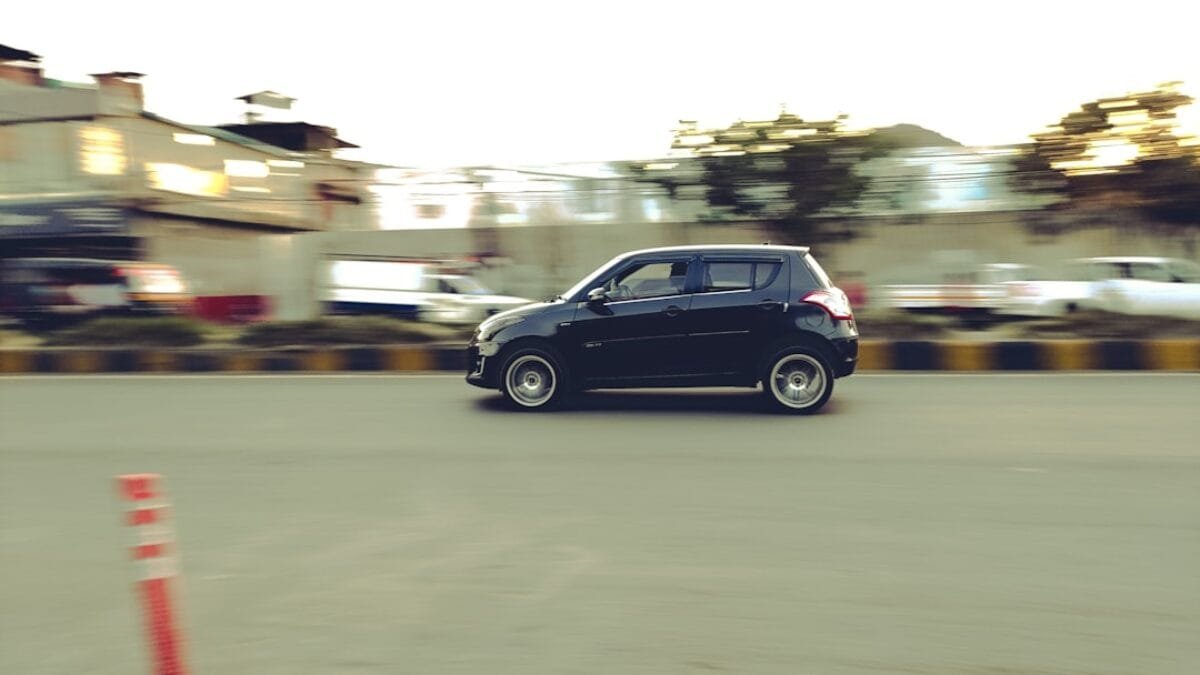The sub-4-metre micro-SUV segment has exploded in India, and two cars are stealing every budget-conscious buyer’s attention in 2025: the Maruti Suzuki Ignis and the Tata Punch. One is a quirky, lightweight hatchback on stilts; the other is a beefed-up, safety-first mini-SUV. Both claim to offer SUV-like road presence, top-notch fuel economy, and city-friendly dimensions without breaching the ₹8-lakh ceiling for most variants. But when you park them side-by-side, differences in design philosophy, powertrain refinement, safety rating, feature spread, and real-world running costs become impossible to ignore. This in-depth comparison will help you decide which micro SUV deserves your hard-earned money this year.
Understanding the Micro-SUV Craze in 2025
Before dissecting the Ignis and the Punch, it pays to understand why micro-SUVs matter. Indian buyers want higher seating, tough styling, and the practicality of a hatchback—minus the bulk and price of a full-size SUV. Urban parking constraints and rising fuel prices have accelerated demand for compact crossovers that can squeeze into tight spots yet deliver 20 km/l+ economy. Maruti and Tata, India’s volume giants, have responded with radically different answers to the same brief.
Key Components of a Budget Micro SUV
To separate marketing hype from genuine value, evaluate every micro-SUV across five pillars:
- Design & Street Presence – Does it look like an SUV or a jacked-up hatch?
- Safety & Build – Crash-test rating, structural integrity, and standard safety kit.
- Powertrain & Efficiency – Engine refinement, gearbox choices, ARAI vs real-world mileage.
- Features & Cabin Usability – Touchscreen size, connectivity, rear-seat space, boot volume.
- Ownership Economics – Ex-showroom price, service costs, resale value, insurance outlay.
Side-by-Side Spec Table
| Parameter | Maruti Suzuki Ignis (2025) | Tata Punch (2025) |
|---|---|---|
| Platform | 5th-gen HEARTECT (lightweight) | ALFA-ARC (Made-for-SUV) |
| Length x Width x Height | 3,700 x 1,690 x 1,595 mm | 3,827 x 1,742 x 1,615 mm |
| Wheelbase | 2,435 mm | 2,445 mm |
| Ground Clearance | 180 mm | 187 mm |
| Engine | 1.2 L K12N DualJet 90 PS / 113 Nm | 1.2 L Revotron 86 PS / 113 Nm |
| ARAI Mileage (MT/AMT) | 20.89 / 20.12 km/l | 20.09 / 18.8 km/l |
| Crash Test Rating | Not officially tested by GNCAP | 5-star GNCAP adult, 4-star child |
| Boot Space | 260 L | 366 L |
| Top Variant Price (Delhi ex-showroom) | ₹7.92 L (Alpha AMT) | ₹8.92 L (Creative AMT Rhythm Pack) |
Design & Street Presence
Maruti Ignis: Retro-Modern Hatch-on-Steroids
The Ignis has always polarised opinions. Its clamshell bonnet, LED DRL brow, and floating-roof stance borrow heavily from Japanese kei-car culture. Flared wheel arches and 15-inch gun-metal alloys on the Alpha trim add muscle, yet the short overhangs retain hatchback proportions. In dual-tone colours like Lucid Orange with Midnight Black roof, the Ignis turns heads in tight urban alleys but can look toy-like on highways crowded with larger SUVs.
Tata Punch: Micro-Harrier Road Presence
Tata’s Impact 2.0 design language scales down perfectly. The Punch gets a slim tri-arrow grille, LED projector headlamps, and chunky cladding that echo the Harrier. A squared bonnet and 187 mm ground clearance lend authentic SUV posture. Roof rails can carry 50 kg, and the 16-inch diamond-cut alloys fill the arches better. In Calgary White with black cladding contrast, the Punch looks closer to a sub-4 m SUV than a hatchback.
Interior Cabin & Ergonomics
Dashboard Layout & Quality
Ignis: The layered dash uses dark greys with gloss-black accents; dials are clear but plastics are hard. The 7-inch SmartPlay Studio touchscreen is slick, with wireless Android Auto & Apple CarPlay. Seats are wide, but cushioning feels flat on long drives.
Punch: A two-tone ivory-black dashboard lifts perceived quality; soft-touch padding on the dash-top beats Ignis. Tata’s 7-inch Harman touchscreen is responsive, and the fully digital instrument cluster with tri-arrow tachometer animation looks premium. Steering adjusts for rake—not reach—on both cars.
Space & Practicality
- Front seats: Both offer generous headroom for six-footers; Punch’s seat bolstering is better.
- Rear seat: Ignis has knee-room comparable to Swift, but narrow cabin forces shoulder contact for three. Punch wins with wider bench and superior thigh support.
- Boot: 366 L of Punch swallows two large suitcases plus soft bags; Ignis’s 260 L needs clever packing for airport runs.
- Storage: Punch offers cooled glovebox and umbrella holder; Ignis counters with twin cupholders and a lidded arm-rest cubby.
Safety & Build Quality
Crash-Test Scores
Here the Punch demolishes Ignis. Tata’s micro-SUV bagged a 5-star Global NCAP adult rating and 4-star child rating, making it the safest car in its class. Dual airbags, ABS with EBD, corner stability control, ISOFIX, and rear parking sensors are standard across trims. The Ignis has not been officially tested; only dual airbags and ABS are standard, with side-airbags missing even on the top variant.
Structural Integrity
The Punch’s ALFA-ARC platform uses high-strength steel (HSS) in 59 % of its structure and adds energy-absorbing crumple zones. Maruti’s HEARTECT chassis focuses on lightweighting; while it meets upcoming Bharat NCAP norms, it lacks the robust feel of Tata’s build.
Powertrain & Driving Dynamics
Engine Specifications
Both cars use 1.2-litre naturally aspirated petrol motors, but the Ignis’s K12N DualJet employs dual injectors and idle stop-start, eking out 90 PS versus the Punch’s 86 PS. Torque is identical at 113 Nm, but the Ignis is 100 kg lighter.
Real-World Performance
- City Commute: Ignis’s light clutch and precise 5-speed MT feel effortless; AMT shifts are smoother with less head-nod. Punch’s cable-type clutch is heavier but tolerable.
- Highway Cruising: Ignis hits 120 km/h with less effort, but crosswinds unsettle its tall stance. Punch remains planted and tracks straight.
- ARAI vs Real Mileage: Ignis returns 17–18 km/l in real city cycles; Punch averages 15–16 km/l.
Ride & Handling
The Punch’s tuned-by-Lotus suspension soaks up speed breakers and potholes without thuds. Ignis feels firmer; sharp bumps filter through. Both use electric power steering—Ignis is ultra-light for parking, Punch weights up nicely past 60 km/h.
Variant-Wise Value Analysis
Maruti Ignis – Sigma, Delta, Zeta, Alpha
- Sigma (₹5.84 L): Bare-bones—no music system, steel wheels, manual mirrors. Skip unless budget is rock-bottom.
- Delta (₹6.38 L): Adds wheel covers, steering-mounted audio, all power windows. Decent starter trim.
- Zeta (₹7.11 L): Push-button start, 15-inch alloys, rear defogger. Sweet spot for features.
- Alpha (₹7.92 L): LED DRLs, SmartPlay Studio, auto climate control. Best value if you want full kit.
Tata Punch – Pure, Adventure, Accomplished, Creative
- Pure (₹6.12 L): Gets dual airbags, rear camera, front power windows. Value king for safety.
- Adventure (₹6.89 L): Adds body-coloured door handles, 7-inch touchscreen, steering modes.
- Accomplished (₹7.69 L): Cruise control, 16-inch alloys, rain-sensing wipers.
- Creative (₹8.92 L): Sunroof, leatherette upholstery, Harman 8-speaker audio, iRA connected-car tech.
Technology & Connectivity
Ignis offers wireless Android Auto/Apple CarPlay, but you miss out on connected-car features. Punch counters with Tata’s iRA suite—live vehicle tracking, geofencing, over-the-air updates, and even remote horn & light flash via smartphone. For tech-savvy buyers, the Punch feels a generation ahead.
Ownership Economics
Service Costs & Network
Maruti’s 3,500+ service touch points across India mean an Ignis can be serviced in tier-3 towns at predictable costs—₹3,500–₹4,000 for a minor service, ₹7,000 for a major one. Tata has 1,200+ outlets; minor service runs ₹4,200, major ₹8,000. However, Tata’s 5-year / 75,000 km warranty beats Maruti’s 2-year / 40,000 km.
Resale Value
Historically, Maruti badges fetch 10–15 % higher resale after five years. Expect an Ignis Alpha to retain ~55 % value, while a similar-age Punch may hover around 45-48 %. Yet, the safety edge and growing Tata brand equity could narrow this gap by 2027.
Practical Applications – Who Should Buy What?
Choose the Ignis if you:
- Need the highest real-world mileage for daily 50-km commutes.
- Prefer feather-light controls and effortless AMT for stop-and-go traffic.
- Have strict sub-₹8 L budget ceiling and want the top trim.
- Reside in smaller towns where Maruti’s network is vital.
Choose the Punch if you:
Prioritise 5-star safety for family use

